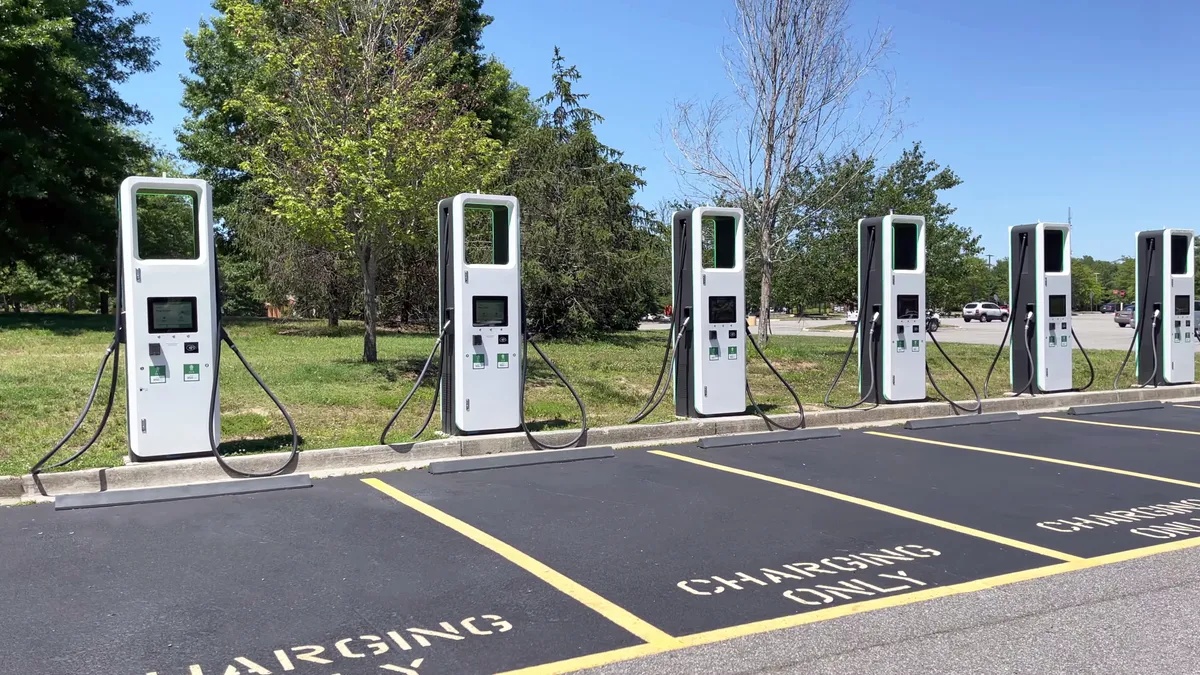Neha Palmer is CEO and co-founder of TeraWatt.
There was a time when the idea of cloud computing and high-speed internet connectivity for the masses was a far-fetched fantasy. However, a mixture of necessity, demand and advancements in technology enabled the creation of data centers at record speed, making centralized computing a staple of everyday life.
Today, a similar paradigm shift is underway, as the electric vehicle industry experiences explosive growth, driven by climate concerns and technological advancements. But how can the lessons learned from data centers' rapid growth be applied to address the challenges faced by the EV industry, especially in developing charging infrastructure?
From small to hyperscale
The first data centers were so small that they could fit into closets. As computing needs increased, data centers grew until they were warehouse sized — with power demands scaling accordingly. At one point, there was significant concern about the amount of power that would be dedicated to data centers. Over time, those fears were assuaged as the demand spread across markets, and efficiency and technology improved.
The transition of fleets to EVs, and in particular the transition of heavy duty fleets, is following a similar trend. While a charging station in front of a grocery store might demand 200 kW of power for two chargers, a charging center capable of charging 10 semi trucks will take 50 times as much power, and a lot more space than two passenger vehicle parking stalls. The demand for charging and power and grid capacity will increase not only as more trucks transition to EVs, but also as the technology advances to increasingly fast charging. These trends happening simultaneously will intensify the search for more grid capacity. While this transition will take place over the next 10 to 15 years, with plenty of time for grid operators to start planning for future needs, they must start planning now.
Thinking ahead of demand
Drawing parallels between data centers and fleet charging, it becomes clear that thinking at scale is vital for success. Like data center developers, for fleets to successfully transition to EVs, charging providers must build a network, preparing for future demand through proactive infrastructure development. By building a robust, ubiquitous network, opportunities will arise to optimize operations and provide the reliable charging solutions fleets require.
When scaling data centers at Google, the company quickly realized to get the power it wanted, it had to work cooperatively with utilities and grid operators; often many years in advance of the electric demand arising. Google learned that collaboration is a two-way street: sharing the company’s objectives allowed the grid operators to plan in advance, and direct developers to grid locations that were more robust, reducing the time and cost to get power.
Leveraging real estate and business models
Just as investors grew to recognize data centers as a real estate-based asset class, the EV charging industry can capitalize on similar characteristics. Similar to how Google, with its focus on data center energy, developed electric infrastructure and electricity procurement for its global fleet that covered dozens of sites across four continents, the EV charging industry can benefit from a strategic focus on infrastructure development.
Google’s key achievements, including becoming the first company of its size to match its entire global electricity use with renewable energy purchases, showcase the potential for transformative impacts when a company commits to sustainable practices.
Indeed, location is proving to be even more critical for charging centers than data centers, making the right real estate suitable for a charging center even more valuable.
Exploring challenges and solutions
With the advent of machine learning and artificial intelligence, data centers are again in the middle of an electric supply crunch. They are meeting this in creative ways, such as shifting load for grid response, incorporating batteries, and on-site renewable energy to address gaps in grid power. As it's just in its infancy, EV charging can adopt some of these innovative strategies at the outset.
Yet innovation needs to be met with planning and speed — specifically, rapid decision-making and deployment of grid infrastructure. We need a Manhattan project-esque devotion to bringing charging online quickly. Fleets and charging providers need to work together on a national or international scale, which could help grid operators forecast the infrastructure requirements and address barriers to build. State and local governments need to contribute by facilitating the rapid construction of charging locations, while utilities will need to incorporate a rapid electrification scenario into their planning models.
The anticipated rollout of charging infrastructure for EVs is expected to follow a trajectory similar to the scale-up of data centers, characterized by a "J" curve of demand for energy and grid capacity.
Advancements in vehicle technology, charging systems and intelligent software, along with integrated telematics, will lead to greater efficiencies in fleet charging. These innovations will help reduce the need for extensive physical infrastructure development.
By drawing inspiration from the success of the data center industry, the EV sector can overcome challenges and contribute to a cleaner transportation network that meets the demands of consumers and businesses. It’s through forward-thinking planning, collaboration and a commitment to sustainability that the EV industry can pave the way for a brighter and more sustainable future.




















